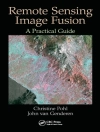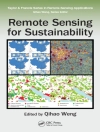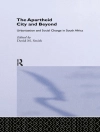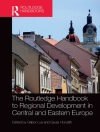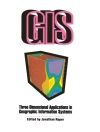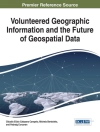Introducing a broad range of innovative and creative qualitative methods, this accessible book shows you how to use them in research project while providing straightforward advice on how to approach every step of the process, from planning and organisation to writing up and disseminating research. It offers:
- Demonstration of creative methods using both primary or secondary data.
- Practical guidance on overcoming common hurdles, such as getting ethical clearance and conducting a risk assessment.
- Encouragement to reflect critically on the processes involved in research.
The authors provide a complete toolkit for conducting research in geography, while ensuring the most cutting-edge methods are unintimidating to the reader.
Spis treści
Part I: Preparing to research
Chapter 1: Introduction – Nadia von Benzon, Mark Holton, Catherine Wilkinson and Samantha Wilkinson
Chapter 2: Centring reflexivity, positionality and autoethnographic practices in creative research – John Horton
Chapter 3: Researching ‘our’ people and researching ‘other’ people – Chris Philo, Louise Boyle and Mark Lucherini
Chapter 4: Ethical considerations in creative research: Design, delivery and dissemination – Sarah Marie Hall, Gemma Sou and Laura Pottinger
Chapter 5: The practicalities of researching creatively – Tracy Hayes
Part II: Creative and innovative methods
Chapter 6: Photography and photo elicitation as visual methods – Noora Pyyry, Markus Hilander and Sirpa Tani
Chapter 7: Moodboards and LEGO: Principles and practice in social research – Helena Pimlott-Wilson and Jo Hickman-Dunne
Chapter 8: Creative approaches to mapping – Amy Mulvenna and Chris Perkins
Chapter 9: Drawing and graffiti-based approaches – Robin Kearns, Kyle Eggleton, Annie van der Plas and Tara Coleman
Chapter 10: Research with sound: An audio guide – Geraint Rhys Whittaker and Kimberley Peters
Chapter 11: Mobile interviews by land, air and sea – Mark Riley, Jennifer Turner, Sam Hayes and Kimberley Peters
Chapter 12: Psychogeography and urban exploration – Morag Rose and Jane Samuels
Chapter 13: Crafting – Cassie Ogden and Katherine Harrison
Chapter 14: Creative performance and practice – Sofie Narbed
Chapter 15: Working with literary texts – Nichola Harmer
Chapter 16: Poetic methods – Gabriel Eshun and Clare Madge
Chapter 17: Research music: listening and composing – Gerraint Rhys Whittaker and Kimberley Peters
Chapter 18: Working creatively with biographies and life histories – Laura Fenton and Signe Ravn
Chapter 19: Mobile technology, spatial and locative media – Mike Duggan
Chapter 20: Mobile phones, text messaging and social media – Jamie Halliwell and Samantha Wilkinson
Chapter 21: Creating and reappropriating apps – Mark Holton
Chapter 22: Gaming and VR in geographical research – Phil Jones and Tess Osborne
Chapter 23: Video ethnography – Thomas Aneurin Smith and Ria Ann Dunkley
Chapter 24: Creative research in and with archives – Matthew F. Rech
Chapter 25: Selecting and analysing publicly-generated online content – Catherine Wilkinson and Nadia von Benzon
Chapter 26: Curation as method – Francesca Church, Hilary Geoghegan and Rhi Smith
Part III: Handling creative data
Chapter 27: Analyzing messy data – Nadia von Benzon and Kimberley O’Sullivan
Chapter 28: Showcasing creative methods in your dissertation research – Pearlin Teow and Mark Holton
Chapter 29: Creative dissemination – Catherine Wilkinson with Matthew Benwell, Bernie Carter, Lorna Brooks, Andy Davies, Bethan Evans, Sergio A. Silverio and Greg Thomas
O autorze
Samantha Wilkinson is a senior lecturer in Childhood, Youth and Education Studies at Manchester Metropolitan University. Samantha has written extensively of a range of themes including children and young people’s geographies and mobilities; young men’s performances of masculinities; home care for people with dementia; animal geographies; and home sharing network Airbnb. Through the research she conducts she uses innovative methodological approaches, including: joint ethnography; diaries; drawing elicitation interviews; mobile phone methods; and (auto)ethnography.



